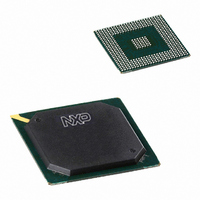PNX1501E,557 NXP Semiconductors, PNX1501E,557 Datasheet - Page 726

PNX1501E,557
Manufacturer Part Number
PNX1501E,557
Description
IC MEDIA PROC 266MHZ 456-BGA
Manufacturer
NXP Semiconductors
Datasheet
1.PNX1502EG557.pdf
(828 pages)
Specifications of PNX1501E,557
Applications
Multimedia
Core Processor
TriMedia
Controller Series
Nexperia
Interface
I²C, 2-Wire Serial
Number Of I /o
61
Voltage - Supply
1.14 V ~ 1.26 V
Operating Temperature
0°C ~ 85°C
Mounting Type
Surface Mount
Package / Case
456-BGA
Lead Free Status / RoHS Status
Lead free / RoHS Compliant
Program Memory Type
-
Ram Size
-
Other names
935274728557
PNX1501E
PNX1501E
PNX1501E
PNX1501E
Available stocks
Company
Part Number
Manufacturer
Quantity
Price
Company:
Part Number:
PNX1501E,557
Manufacturer:
NXP Semiconductors
Quantity:
10 000
- Current page: 726 of 828
- Download datasheet (8Mb)
Philips Semiconductors
Volume 1 of 1
PNX15XX_SER_3
Product data sheet
5.8.3 Quality-of-service Transmission Mode
The two transmit descriptor/status arrays and datapaths can also be used to
implement a generic quality-of-service (QoS) mechanism for transmit packets.
The QoS mechanism distinguishes two priority queues: a queue with low priority and
a queue with high priority. The Tx descriptor FIFO (using TxDescriptor and TxStatus)
and Tx DMA manager implement the high-priority queue and the TxRt descriptor
FIFO (using TxRtDescriptor and TxRtStatus) and TxRt DMA manager implement the
low-priority queue.
To implement QoS, software should enter transmit packets that have a high quality of
service requirements into the Tx (high-priority) descriptor array, while other packets
should be entered into the TxRt (low-priority) descriptor array. If there are any packets
in the high priority queue, they are sent out first before any packets that are waiting in
the low-priority queue. Packets in the low-priority queue are only sent if the
high-priority queue is empty.
To prevent starvation of packets in the low priority queue, the QoSTimeout register
defines the maximum number of transmit clock cycles that low-priority packet must
wait at the head of the low-priority queue. An internal time-out counter starts counting
transmit clock cycles, starting from 0, as soon as a low-priority packet reaches the
transmission arbiter. If the low-priority packet is still waiting to be transmitted when
the counter reaches the QoSTimeout register’s value, then the arbiter will promote
the priority of only that one low-priority packet over the high priority queue. After
sending the low-priority packet, the low-priority queue will be set back to the low
priority. The waiting time of a packet in the low-priority queue can be larger than the
QoSTimeout register’s value if it has to wait to reach the head of the queue.
To enable the QoS mechanism, set bit EnableQoS bit in the Command register to 1.
When the QoS mechanism is active, the time-stamp word in the Tx and TxRt
descriptors is ignored, and the BlockZone register is disabled. The descriptor format
is still the same.
Rev. 3 — 17 March 2006
Chapter 23: LAN100 — Ethernet Media Access Controller
© Koninklijke Philips Electronics N.V. 2006. All rights reserved.
PNX15xx Series
23-57
Related parts for PNX1501E,557
Image
Part Number
Description
Manufacturer
Datasheet
Request
R
Part Number:
Description:
Manufacturer:
NXP Semiconductors
Datasheet:
Part Number:
Description:
Digital Signal Processors & Controllers (DSP, DSC) MEDIA PROCESSOR PNX15XX/266MHZ
Manufacturer:
NXP Semiconductors
Datasheet:

Part Number:
Description:
IC MEDIA PROC 266MHZ 456-BGA
Manufacturer:
NXP Semiconductors
Datasheet:
Part Number:
Description:
NXP Semiconductors designed the LPC2420/2460 microcontroller around a 16-bit/32-bitARM7TDMI-S CPU core with real-time debug interfaces that include both JTAG andembedded trace
Manufacturer:
NXP Semiconductors
Datasheet:

Part Number:
Description:
NXP Semiconductors designed the LPC2458 microcontroller around a 16-bit/32-bitARM7TDMI-S CPU core with real-time debug interfaces that include both JTAG andembedded trace
Manufacturer:
NXP Semiconductors
Datasheet:
Part Number:
Description:
NXP Semiconductors designed the LPC2468 microcontroller around a 16-bit/32-bitARM7TDMI-S CPU core with real-time debug interfaces that include both JTAG andembedded trace
Manufacturer:
NXP Semiconductors
Datasheet:
Part Number:
Description:
NXP Semiconductors designed the LPC2470 microcontroller, powered by theARM7TDMI-S core, to be a highly integrated microcontroller for a wide range ofapplications that require advanced communications and high quality graphic displays
Manufacturer:
NXP Semiconductors
Datasheet:
Part Number:
Description:
NXP Semiconductors designed the LPC2478 microcontroller, powered by theARM7TDMI-S core, to be a highly integrated microcontroller for a wide range ofapplications that require advanced communications and high quality graphic displays
Manufacturer:
NXP Semiconductors
Datasheet:
Part Number:
Description:
The Philips Semiconductors XA (eXtended Architecture) family of 16-bit single-chip microcontrollers is powerful enough to easily handle the requirements of high performance embedded applications, yet inexpensive enough to compete in the market for hi
Manufacturer:
NXP Semiconductors
Datasheet:

Part Number:
Description:
The Philips Semiconductors XA (eXtended Architecture) family of 16-bit single-chip microcontrollers is powerful enough to easily handle the requirements of high performance embedded applications, yet inexpensive enough to compete in the market for hi
Manufacturer:
NXP Semiconductors
Datasheet:
Part Number:
Description:
The XA-S3 device is a member of Philips Semiconductors? XA(eXtended Architecture) family of high performance 16-bitsingle-chip microcontrollers
Manufacturer:
NXP Semiconductors
Datasheet:

Part Number:
Description:
The NXP BlueStreak LH75401/LH75411 family consists of two low-cost 16/32-bit System-on-Chip (SoC) devices
Manufacturer:
NXP Semiconductors
Datasheet:

Part Number:
Description:
The NXP LPC3130/3131 combine an 180 MHz ARM926EJ-S CPU core, high-speed USB2
Manufacturer:
NXP Semiconductors
Datasheet:

Part Number:
Description:
The NXP LPC3141 combine a 270 MHz ARM926EJ-S CPU core, High-speed USB 2
Manufacturer:
NXP Semiconductors

Part Number:
Description:
The NXP LPC3143 combine a 270 MHz ARM926EJ-S CPU core, High-speed USB 2
Manufacturer:
NXP Semiconductors











